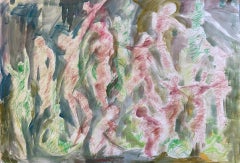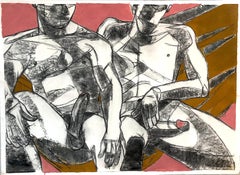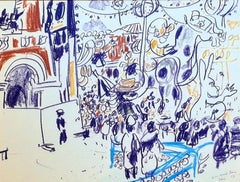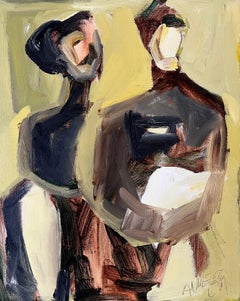Wax Crayon Figurative Paintings
Late 20th Century Surrealist Wax Crayon Figurative Paintings
Paper, Crayon, Wax Crayon, Pen, Color Pencil
1950s Symbolist Wax Crayon Figurative Paintings
Wax Crayon
21st Century and Contemporary Contemporary Wax Crayon Figurative Paintings
Paper, Wax Crayon, Acrylic
1980s Surrealist Wax Crayon Figurative Paintings
Paper, Wax Crayon, Ink, Tempera, Pen
Early 2000s Conceptual Wax Crayon Figurative Paintings
Oil Crayon, Wax Crayon, Mixed Media
21st Century and Contemporary Conceptual Wax Crayon Figurative Paintings
Canvas, Charcoal, Mixed Media, Acrylic
2010s Contemporary Wax Crayon Figurative Paintings
Archival Ink, Archival Paper, Carbon Pencil, Oil Pastel
21st Century and Contemporary Pop Art Wax Crayon Figurative Paintings
Oil Pastel, Mixed Media, Acrylic, Newsprint
20th Century Post-Modern Wax Crayon Figurative Paintings
Paper, Oil Crayon, Mixed Media, Watercolor
21st Century and Contemporary Pop Art Wax Crayon Figurative Paintings
Oil Pastel, Mixed Media, Acrylic, Newsprint
21st Century and Contemporary Pop Art Wax Crayon Figurative Paintings
Oil Pastel, Mixed Media, Acrylic, Newsprint
Mid-20th Century Impressionist Wax Crayon Figurative Paintings
Color Pencil
Late 19th Century Symbolist Wax Crayon Figurative Paintings
Oil
21st Century and Contemporary Pop Art Wax Crayon Figurative Paintings
Oil Pastel, Mixed Media, Acrylic, Newsprint
Early 2000s Conceptual Wax Crayon Figurative Paintings
Mixed Media, Canvas
21st Century and Contemporary Conceptual Wax Crayon Figurative Paintings
Fabric, Canvas, Mixed Media, Oil, Acrylic
21st Century and Contemporary Contemporary Wax Crayon Figurative Paintings
Canvas, Oil Pastel, Mixed Media, Acrylic
Late 20th Century Expressionist Wax Crayon Figurative Paintings
Paper, Crayon, Pastel, Wax Crayon
2010s Contemporary Wax Crayon Figurative Paintings
Canvas, Wax Crayon, Acrylic
Late 20th Century Expressionist Wax Crayon Figurative Paintings
Paper, Chalk, Crayon, Oil Pastel, Pastel, Wax Crayon
2010s Contemporary Wax Crayon Figurative Paintings
Canvas, Wax Crayon, Oil
2010s Contemporary Wax Crayon Figurative Paintings
Canvas, Wax Crayon, Oil
2010s Contemporary Wax Crayon Figurative Paintings
Canvas, Wax Crayon, Oil
2010s Contemporary Wax Crayon Figurative Paintings
Canvas, Wax Crayon, Oil
2010s Contemporary Wax Crayon Figurative Paintings
Canvas, Wax Crayon, Oil
2010s Contemporary Wax Crayon Figurative Paintings
Canvas, Wax Crayon, Oil
2010s Contemporary Wax Crayon Figurative Paintings
Canvas, Wax Crayon, Oil
2010s Contemporary Wax Crayon Figurative Paintings
Canvas, Wax Crayon, Oil
2010s Contemporary Wax Crayon Figurative Paintings
Canvas, Wax Crayon, Oil






